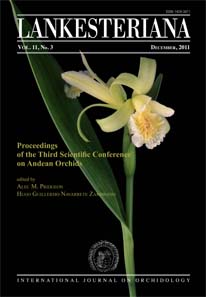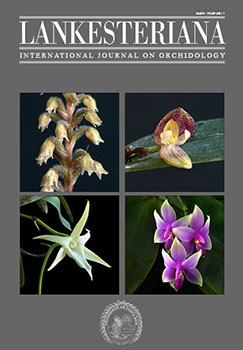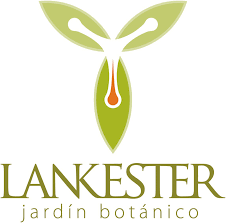Epigenetic information – Unexplored source of natural variation
DOI:
https://doi.org/10.15517/lank.v11i3.18287Palabras clave:
orchids, hybridization, fingerprinting analyses, epigeny, environmental influenceResumen
Con la aplicación de nuevas técnicas moleculares, rápidos avances se han hecho para comprender la organización de las orquídeas a nivel de poblaciones. Uno de los mayores problemas encontrados en varios grupos de orquídeas de zonas temperadas, ha sido que los taxa ecológicamente diferentes, al parecer son genéticamente similares. Por ejemplo, sabemos que Dactylorhiza traunsteineri, D. majalis, y D. ebudensis son resultado de la hibridización de D. fuchsii y D. incarnata, pero éstas tienen ecología y distribución diferentes dentro del nor-oeste de Europa. A través de la comparación de análisis “fingerprint” de regiones expresadas, con estudios “fingerprint” de sitios sensibles a la metilación en ADN genómico, podemos detectar patrones que indican que algunas de estas diferencias se deben a efectos epigenéticos, los cuales han sido encontrados en varios grupos que han sido expuestos a la influencia del ambiente. Así, taxa que son ecológicamente diferentes, pero que son al parecer genéticamente uniformes, podrían ser el resultado de la expression de genes, debido a una alteración de los controles epigenéticos, pero sin que haya ocurrido ningún cambio en el material genético.
Descargas
Descargas
Publicado
Cómo citar
Número
Sección
Licencia
Conforme con las Políticas de Acceso Abierto promovidas por la Universidad de Costa Rica, los derechos de autor de todos los artículos publicados en Lankesteriana se encuentran bajo una licencia Creative Commons y pueden ser descargados gratuitamente. Los derechos de autor y de publicación pertenecen a la revista bajo la licencia CC BY-NC-ND 3.0 CR.
Before the publication of the materials submitted by the author(s) in LANKESTERIANA, the author(s) hereby assign all rights in the article to the Lankester Botanical Garden.





